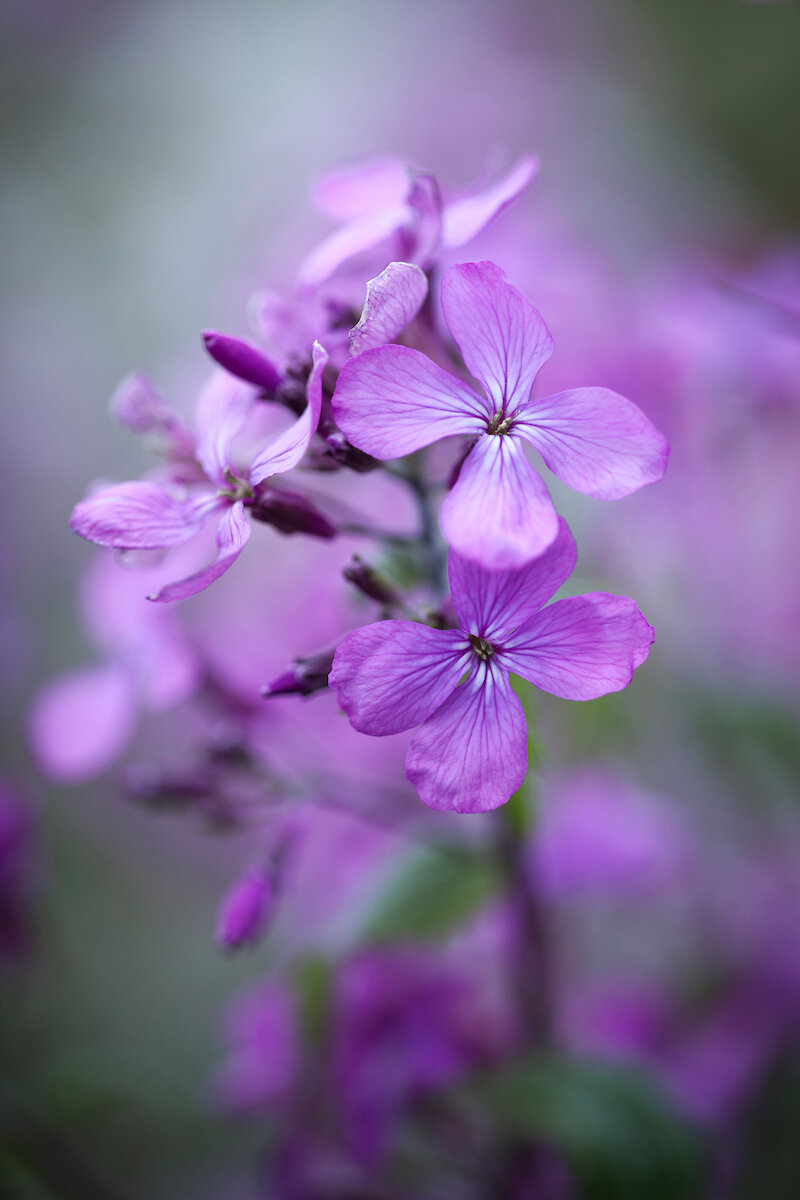Honesty
Photographs by Sabina Rüber
Corfu Blue
Alba
Common honesty
Honesty seed pods
Honesty is such a useful plant for early spring, an easy companion for tulips and euphorbias with its loose sprays of magenta, purple or white flowers. It is also known for its seed pods, those round, translucent, papery discs that shimmer silver in the sun, and these can be cut to bring into the house in the same way as the flowers. Most forms are biennial, flowering in their second year, but they self-seed freely to weave their way languidly around other plants, creating a very natural look.
The common honesty, Lunaria annua, has flowers of a variable colour, ranging from purple through magenta-pink to paler pink. magenta pink, with dark green, rather coarse leaves. I have a dark form, with purplish leaves and magenta pink flowers, sometimes sold as ‘Chedglow’. The white-flowered Lunaria annua var albiflora is a lovely plant, but even more useful is the variegated form ‘Alba Variegata’. In their first, non-flowering year, their leaves are simply green, but in the second year they form more leaves that are silvery white, at the same time as sending up a branching spike of delicate white flowers.
I think the very best form of honesty is ‘Corfu Blue’ which has purple-blue flowers and dark-flushed stems. I first got seed from Helen Dillon in Ireland several years ago, and have been growing it ever since. It self-seeds magnificently, producing strong plants that flower early in the year – and just go on and on. Last year mine flowered from the end of February all the way through spring, forming a wonderful backdrop to tulips and other spring bulbs. A final mention should be given to the perennial honesty L. rediviva, which has softly scented lilac flowers followed by beautiful seed heads that are more elongated than normal honesty seed pods, coming to a point at one end.
Collecting and sowing your own honesty seed is one of life’s pleasures. The large discs can be collected from the plant and should be dried before sowing. The seeds are hidden within the papery layers of the seed pod, usually three of them, large and flat and easy to handle. As biennials, you can sow them any time in spring from March until June, either direct or in modular trays or small pots, to flower the following year. If you are sowing under cover, sow one or two seeds to a module, using a loam-based compost topped with a thin layer of grit or more compost, and germinate at about 18C. Grow them on outside or in a cool greenhouse, but don’t leave them too long in their pots as this will inhibit their tap roots from forming properly. Plant them out in their final positions to let them develop over summer, autumn and winter, before flowering the following year.
Back to The Flower Garden main page. To buy a copy of The Flower Garden book click here.



